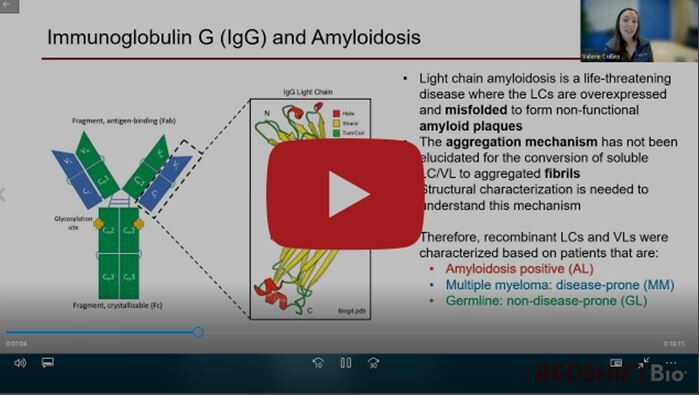Characterising Amyloid-Forming Immunoglobulin G Light and Variable Chains Using Microfluidic Modulation Spectroscopy (MMS)
15 Aug, 2022 | Newsletters

| Protein structure is vitally important to function, however, loss in activity is not the only misfortune for misfolded proteins as they can also be immunogenic and disease-causing as in the case of amyloid plaques. Light chain amyloidosis results from the aggregation of the light chain in Immunoglobulin G (IgG) which is one of the most prevalent proteins in human serum. In this webinar, we will cover the structural analysis of both light and variable chain domains of non-disease-causing IgGs from germline (GL), potential disease-causing domains from patients with multiple myeloma (MM), and disease-causing domains from amyloidosis patients (AL). Each sample was analyzed using Microfluidic Modulation Spectroscopy (MMS), a high-precision secondary structure characterization tool developed by RedShiftBio. Full structural characterization of IgG is important because the mechanism of aggregation is still unknown and further elucidation could lead to insights into potential treatments and cures. WATCH NOW RedShiftBio’s structural analysis instrument, the AQS³pro and Apollo, provides users with the ability to measure critical changes in bimolecular structure. AQS³pro overcomes many of the limitations of traditional spectroscopy-based technologies, with ultrasensitive, highly reproducible, automated structural measurements of proteins and other biomolecules.  |
| DOWNLOAD BROCHURE REQUEST A QUOTE REQUEST A DEMO |




 02 9541 3500
02 9541 3500